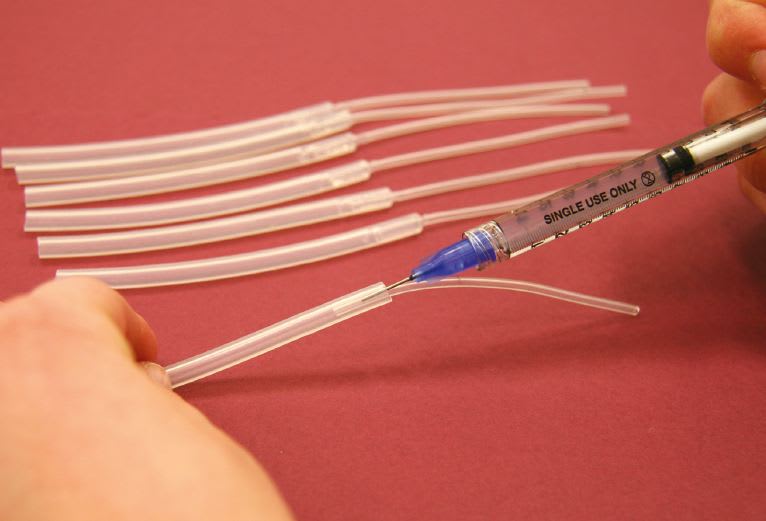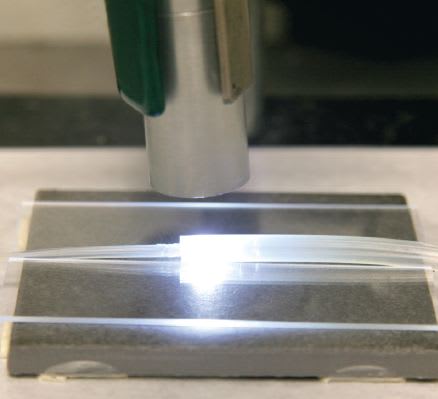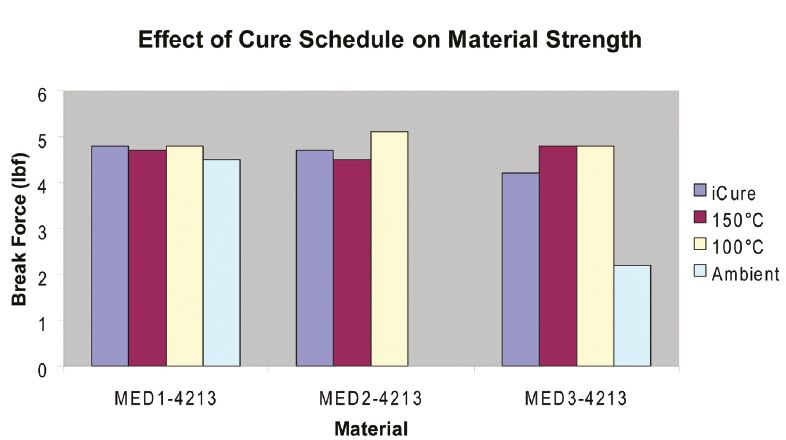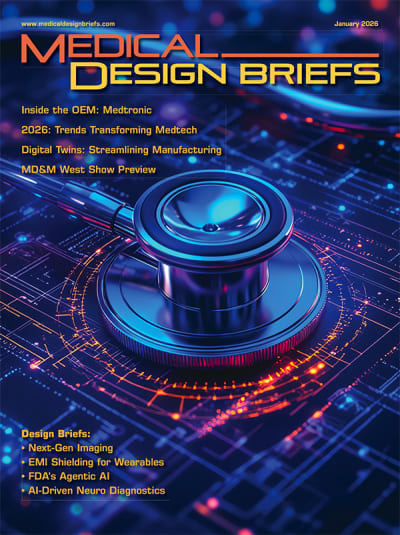Utilized in a wide variety of adhesion applications — from urinary catheters to cardiac pacemakers — one-part condensation-cure adhesives have traditionally been the most commonly used silicone adhesives in the healthcare industry. Despite their acclaimed and proven effectiveness, the downside to using these adhesive systems is their long cure time (many hours or even days at room temperature) and inability to be accelerated with heat. Alternatively, using a two-part, addition-cure silicone adhesive — also known as a fast-cure adhesive — is often helpful or even necessary, depending on the application at hand.

Cure by Infrared
A modern, more specialized thermal technology is utilized by the iCure® AS200 Spot Curing System by IRphotonics (Hamden, CT). This system cures adhesives by emitting infrared radiation (IR) to a targeted area of material to create an environment in which the adhesive generates heat internally. Once absorbed by the adhesive, IR causes the atoms comprising the adhesive to vibrate, resulting in a temperature increase.

Two studies were conducted using silicone materials by NuSil Technology (Carpinteria, CA) and the iCure® Thermal Spot Curing System by IRphotonics. The first study demonstrated the ability of IR to cure healthcare-related silicone adhesives within seconds. In this study, all participating materials were checked for cure progression at the same intervals (10, 30, 60, 120, and 180 seconds), but the individual cure time of each adhesive was not obtained. In an effort to quantify exactly how long these materials take to cure with IR, a second study was initiated in which the cure rate of each sample was more attentively monitored than in the previous study.
First Study

MED1-4213, MED2-4213 and MED3-4213 are two-part, addition-cure adhesives commonly used in the assembly of medical devices. According to their cure schedules, MED1-4213 and MED3-4213 fully cure in 24 hours at room temperature (RT), 25 ºC, and are often cured in shorter time periods when exposed to heat. MED2-4213 has a longer work time and requires heat to initiate curing.

For the IR cure, samples absorbed infrared at 6.5 watts and were monitored for rate of cure. All had fully cured after 180 seconds, showing that IR provides a significantly faster cure than the more conventional oven cure. The chosen amount of wattage was determined by the size of the area to be targeted by infrared — the one centimeter-long bond line. These samples were tested for adhesion strength after a five-minute exposure to IR.
Figure 3 depicts the results of the break force test for all samples regardless of cure schedule utilized. Comparative analysis shows that silicone adhesives cured via IR in less than 180 seconds can exhibit similar adhesive properties as those cured in an oven, according to their cure schedules.
Second Study

The silicone adhesives were cured on glass slides placed on one of two slightly different backings. Samples of each adhesive were divided between a thermally conductive alumina-filled silicone elastomer backing, and a darker gray version containing black pigment. Because the iCure system emanates light energy, or heat, to cure materials, the different colored backings presumably allowed for more extensive inter and intra adhesive cure time comparison. The samples were considered fully cured when they were completely solid and dry to the touch.
Per adhesive, Table 2 lists the average cure times of the samples based on the backing used. The wide discrepancy in cure times of samples of the same adhesives indicates that the substrate used will have significant influence over how much light is reflected back through the silicone versus how much is retained within the specimen. The increased absorbance of light and the subsequent radiation of heat can be seen in the decreased cure times of samples using the darker backing.
Conclusion

This article was written by Brian Reilly, Product Director, Healthcare Materials for NuSil Technology LLC, Carpinteria, CA, and Élizabeth Brunet, Application Specialist for IRphotonics, Hamden, CT. For more information about NuSil, visit http://info.hotims.com/40434-161 or visit http://info.hotims.com/40434-162 to learn more about IRphotonics.



